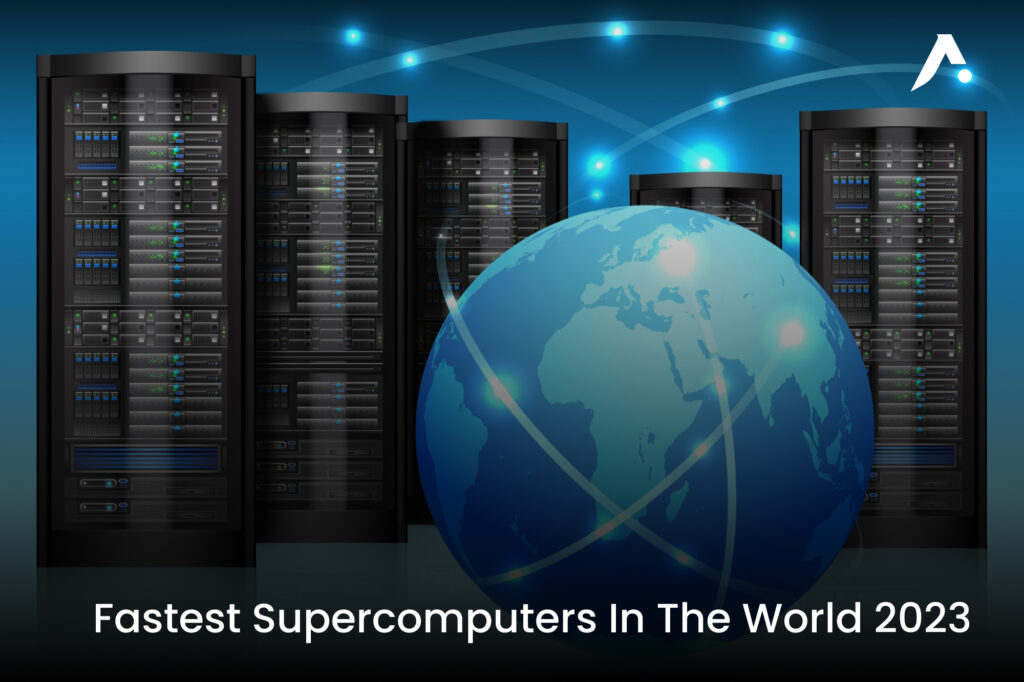For the majority of us, a computer probably seems fast enough to play the most recent Far Cry game at 60 frames per second without scaling back or running 8K recordings. A workstation with an i9 CPU is unable to do the billions of calculations needed by many complicated tasks every second. The world’s fastest supercomputers will exist in 2023.
The goal of maximizing performance in supercomputing is ever-changing. Supercomputers share many characteristics with other machines. “that operates at or near the currently most notable functional rate.” The battle to be magnificent is ongoing on the field. The folks who reach the high level might only hold to it for a short while.
Table of Contents
1. Sunway Taihu Light

Speed: 93 petaFLOPS
Cores: 10,649,600
Vendor: NRCPC
Location: National Supercomputing Center in Wuxi, China
Sunway TaihuLight, a former number one, dominated the chart for a while after its introduction in June 2016. Around that time, it was the most potent supercomputer in the world with 93.01 petaFLOPS and 10,649,000 centers. boasting nearly twice times as many centers and more than multiple times the handling force of its closest competitor, Titan from ORNL.
Given the continual pace of technological advancement, no position is ever truly secure for an extended period of time. In June 2018, TaihuLight gave up the top spot to rivals.
2. PANGEA III

Speed: 17.86 PFlop/s
Cores: 291,024
Vendor: IBM
Location: National Supercomputing Center in Guangzhou, China
IBM’s high-performance, elite execution design is essential to Pangea III. Together, IBM and NVIDIA built the industry’s exclusive CPU-to-GPU NVLink relationship. It enables a memory data transfer rate between the IBM POWER9 CPU and NVIDIA Tesla V100 Tensor Core GPUs that is approximately five times faster than that of conventional x86-based systems.
The design promotes energy efficiency while also developing registering execution. In comparison to Pangea I and II, the new system uses less than 10% of the energy per petaFLOP.
There are various applications for Pangea III. in the areas of asset assessment and selectivity, improvement and creation models, and seismic imaging research and development.
3.Tianhe-2

Speed: 61.4 petaFLOPS
Cores: 4,981,760
Vendor: NUDT
Location: National Supercomputing Center in Guangzhou, China
Tianhe-2, often known as “MilkyWay-2”, is a spacecraft. In June 2013, it debuted as the number one in the world. Despite redesigns made over the years, 4,981,760 centers are currently operating at 61.4 petaFLOPS. It is currently barely holding onto a slot among the top five. the fleeting beauty of a contemporary supercomputer
China’s NUDT, or National University of Defense Technology, was created. According to TOP500, the device was anticipated to be used mostly for government security purposes. This suggests that Tianhe-2 keeps a sizable portion of its work a secret. It ought to be handling a few rather important projects, if its handling power is anything to go by.
4. AI Bridging Cloud Infrastructure

Speed: 19.8 petaFLOPS
Cores: 391,680
Vendor: Fujitsu
Location: National Institute of Advanced Industrial Science and Technology, Japan
The largest Open AI Computing Infrastructure in the world, with a maximum performance of 32.577 petaFLOPS, is this one. There are a total of 1,088 hubs, 2 Intel Xenon Gold Scalable processors, 4 NVIDIA Tesla V100 GPU, 2 InfiniBand EDR HCAs, and 1 NVMe SSD in each hub.
By using high-temperature water and air cooling, Fujitsu Limited claims that the supercomputer will be able to achieve multiple times the warm thickness of typical server farms and a cooling limit of 70 kW Rack.
5. Frontera

Speed: 23.5 petaFLOPS
Cores: 448,448
Vendor: Dell EMC
Location: Texas Advanced Computing Center, United States
Frontera provides a wide range of computational assets, opening up new possibilities for planning and exploring. That makes it easier for academics to manage a variety of mind-boggling challenges across a wide range of domains.
There are two registering subsystems in Frontera. The first focuses on performance with double accuracy, whereas the second focuses on stream-memory computation with single accuracy. It also offers numerous application hubs and cloud interfaces for supporting virtual servers.
6. Sierra

Speed: 94.6 PFlop/s
Cores: 1,572,480
Vendor: IBM, NVIDIA
Location: Lawrence Livermore National Laboratory
In comparison to its ancestor Sequoia, Sierra exhibits supported performance and responsible performance that are both multiplied. It combines NVIDIA’s Volta GPUs with IBM’s Power 9 processors into one processor unit.
Sierra was created particularly to evaluate the effectiveness of atomic bomb systems. It was used for future-proofing purposes in the US program of constant quality control and maintenance of atomic weapons with essentially no atomic testing.
7. Fugaku

Speed: 442 PFlop/s
Cores: 7,630,848
Vendor: Fujitsu
Location: RIKEN Center for Computational Science, Japan
Japan’s Fugaku, jointly created by RIKEN and Fujitsu, is now the world’s fastest supercomputer. Since June 2011, Japan has not had a system adopt the best position. when the K computer, Fugaku’s predecessor, took the major role.
- On the TOP500, it achieved a LINPACK score of 442.01 petaFLOPS.
- On the High-Performance Conjugate Gradient benchmark, it scored 16.00 petaFLOPS.
- On the High-Performance LINPACK for Acceleration Introspection, it scored 2.004 exaFLOPS.
The main and most advanced system for controlling ARM processors is called Fugaku. Hybrid memory blocks connected to each CPU are two other novel components. The Tofu network’s cycle, which provides a precise mix between each hub in the system.

